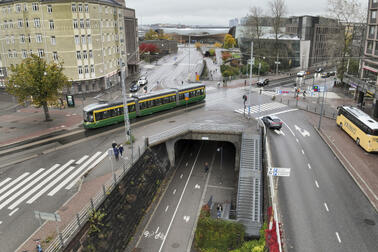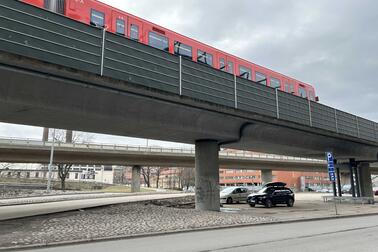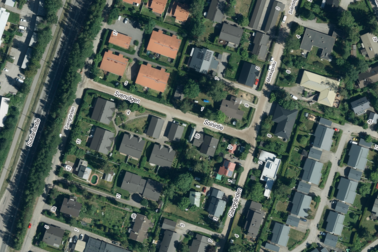
The project included the construction of a new bridge for pedestrians and cyclists, along which the Baana runs next to the metro track over Kipparlahdensilmukka. New car parking areas were also built on the east side of Kipparlahdensilmukka and under the new bridge. The car parks serve visitors to the Kivinokka and Vanhankaupunginselkä recreational areas. The construction began in 2024.
A bridge lined by an art railing
The bridge features an impressive 200-metre-long art railing consisting of printed panels. The panelled railing at the bridge and the high ramp reduces the noise pollution generated by the metro in the allotment garden area. The railing is adorned with graphics designed by Robert Lönnqvist.
Construction site emissions reduced with the help of an electric excavator
Excavation work at the project’s low-emission construction site was carried out with a rechargeable electric excavator.
Piloting the use of electric machines on the City of Helsinki’s construction sites is part of the national Green Deal commitment for emissions-free construction sites, to which the City is committed. The aim is to increase the share of electric machinery and vehicles in the coming years, to which end Helsinki is actively monitoring how the market for them develops.
The Eastern Baana is being completed one section at a time
The Eastern Baana linking eastern Helsinki and the city centre is being built in stages. The Kulosaaren puistotie section, where the Baana is a bicycle street, was completed in 2021. The Oravapuisto park section between Suunnittelijankatu and Valurinkatu was completed in 2023.
One of the most important cycling development projects in Helsinki, the Eastern Baana will significantly improve the flow, safety and appeal of cycling between East Helsinki and the city centre. It will serve a wide range of user groups and contribute to the strategic objectives of both the City and the region.



